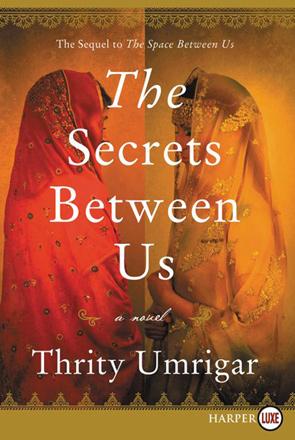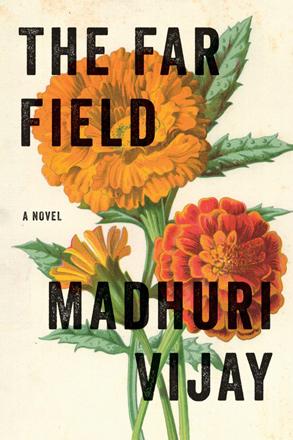You are here
New lives in a new India?
By Sally Bland - Nov 03,2019 - Last updated at Nov 04,2019

The Secrets Between Us
Thrity Umrigar
New York: HarperCollins Publisher, 2018
Pp. 357
This novel is the sequel to “The Space Between Us”, which Thrity Umrigar published in 2006, but though many of the same characters appear, there is a whole different slant to “The Secrets Between Us”.
In her earlier novel, the author explored the servant-mistress relationship as it plays out in modern-day Mumbai, perpetually weighted to the advantage of the employer. While both books highlight the particular vulnerability of women, “Secrets”, in contrast, shows how two disadvantaged women are able to shift the balance of power ever so slightly in their direction.
“The Secrets Between Us” opens with Bhima still reeling under the consequences of being dismissed after years of loyal service as servant and nanny, the reason being that she spoke the uncomfortable truth: that her mistress’s son-and-law, husband of the child Bhima has loved and raised, had impregnated Bhima’s granddaughter.
Now old and tired, she is overwhelmed by the need to find new work and sceptical that she will find something comparable.
For though she is outraged at being dismissed so unjustly and had always been treated as a second-class human being according to prevailing custom, her mistress had been kind to her within the limits India’s caste system, which Bhima doesn’t dare to question.
Her work had been stable, predictable, and offered her respite from her life in one of Mumbai’s notorious slums. She knew the most intimate secrets of her mistress, but in the end, the space between them won out over the secrets between them.
Now, Bhima is faced with the unknown; she fears she will not be able to fulfil her dream of her granddaughter, Maya, getting a college education. Deserted by her husband, illiterate, having lost her daughter to the AIDS epidemic, she feels totally alone.
This prelude doesn’t seem to give much room for an even remotely happy ending without the introduction of magical solutions, but Umrigar eschews this option and instead delves deep into the hidden human potentials of empathy, love, bravery and hope to rescue some of her characters.
Partly by chance and partly by her persistence and ingenuity, Bhima begins selling fruits at the local market. Here she encounters Parvati, a cynical, disfigured, streetwise woman whose past contains many of the secrets referred to in the title; her story is the other major thread in the novel.
At first, Bhima is wary of her. Proud and socially conservative, she thinks herself better than most of her compatriots in the ranks of the poor. Parvati mocks Bhima’s snobbishness and her loyalty to the prevailing system.
She has a more incisive analysis of the reasons for poverty and marginalisation: “We are all discarded people… someone or the other has betrayed us”. (p. 110)
Bhima discovers Parvati’s hidden talents--her literacy and her ability to keep accounts. Grudgingly, they become partners in the market, but Bhima is irritated by Parvati’s refusal to answer any questions about her past, saying only, “Because without my secrets I am nothing.” (p. 208)
The slowly blossoming friendship between the two women jars many of Bhima’s preconceptions which are further challenged when she learns that two women who hire her to clean their house are lovers. Gradually, she realises that these are the people who treat her with respect.
In all these changes, her granddaughter is the link. Going to university transforms Maya from a passive dependent, a burden, into an increasingly conscious young woman who prods Bhima to embrace change. Yet, she knows that Maya’s transformation is a double-edged sword. “This very education that Bhima has paid for with every drop of sweat, every tired and straining muscle in her body, will be the knife that someday will sever the ties between her and Maya.” (p. 296)
The novel does not show any lessening of the granddaughter’s loyal to Bhima, but Maya certainly symbolises the new generation raised in the age of modernity and globalisation, the effects of which are felt throughout the novel.
Yet how much has changed? When a market trader says, “This is the new India. People will sell their grandmothers if the price is right”. Parvati retorts, “If that’s so, then the new India is no different from the old India. Money was king then and it is king now.” (p. 183)
The relation between past and present is a key factor in the unfolding of the plot, and Umrigar structures the novel via memory. Much of the story is told in retrospect as Bhima and Parvati, respectively, recall their past of lost love and reduced social status.
Umrigar paints a pulsating narrative of life in Mumbai, especially in the poor quarters, calling attention to systematic injustice — the scandalous deceit of employers, exploitation of women, unjust labour practices which throw people into poverty and keep them there, the horrendous medical care offered the poor, and much more.
At the same time, she tells a deeply human story of how people can band together to alleviate the difficulties of their lives. In their solidarity lies hope.
Related Articles
The Far FieldMadhuri VijayNew York: Grove Press, 2019Pp.
The Weight of ParadiseIman HumaydanTranslated by Michelle HartmanMassachusetts: Interlink Books, 2016Pp.
The Mercy SellerBrenda Rickman VantreaseNew York: St.


















